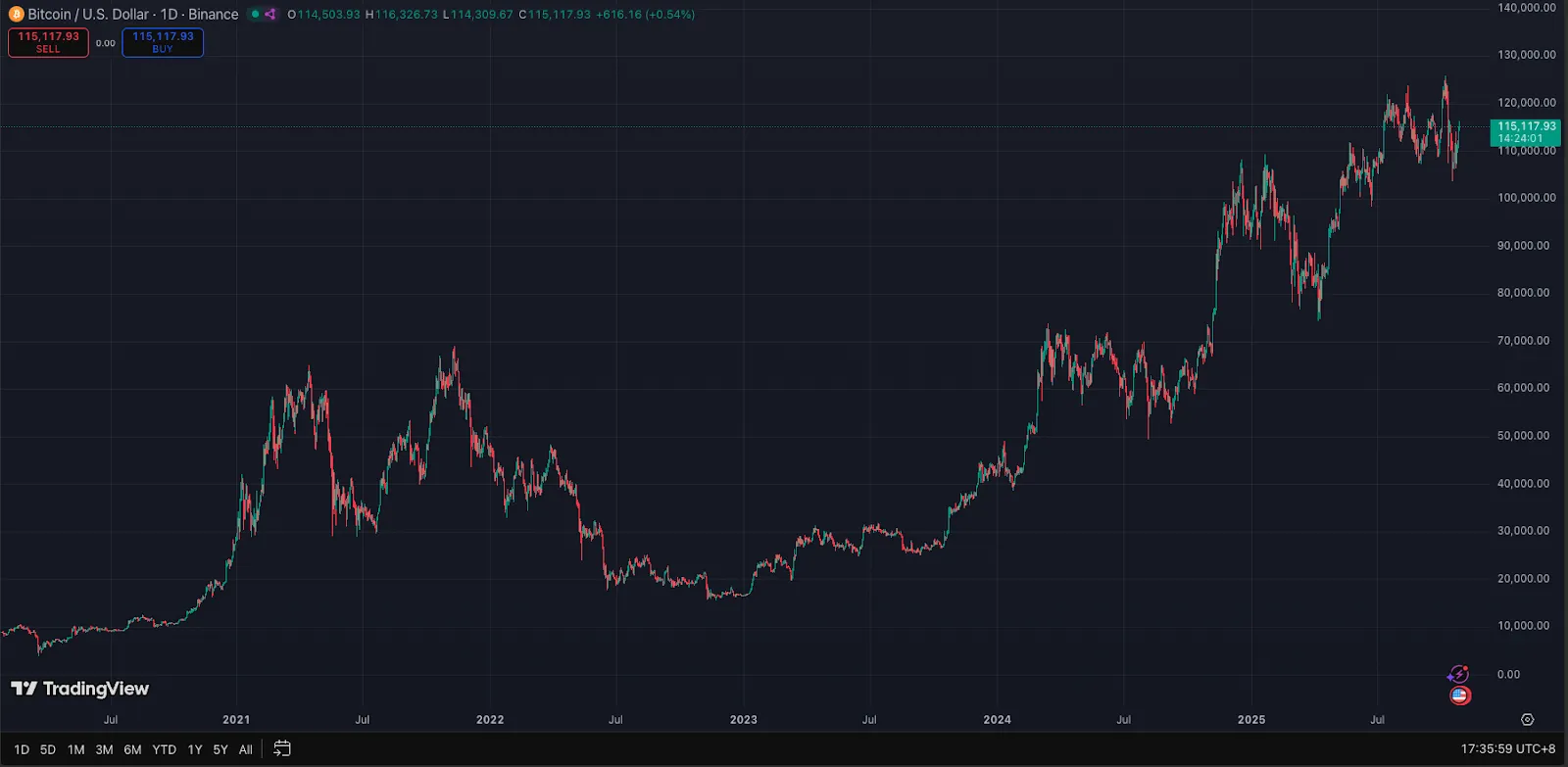The return of Token2049 to Singapore this year marked a renewed sense of optimism for the digital asset industry — driven by stronger institutional participation, growing regulatory clarity, and visible convergence between finance and technology. Director of Wealth Advisory at Lighthouse Canton, Joshua Choo, shared his on-ground observations and key takeaways from the event, reflecting how the ecosystem continues to evolve and mature.
While Bitcoin prices have seen volatility over the last few months, yet the overall sentiment remains optimistic and Token2049 captured the market’s prevailing confidence.
“ The event’s enthusiasm is always related to how high the crypto market is relative to the previous year,” said Choo.

Choo observed that Token2049 continues to cement itself as a key convergence point for the global crypto ecosystem, and this year’s edition underscored three themes in particular.
Firstly, new entrants—new companies who are emerging and showcasing their capabilities. “Each year, maybe at least 30% of all the companies that participate are new,” he said. That constant influx, he added, keeps the event fresh and dynamic even as large exchanges and custodians continue to dominate the space. These new companies can be spread across the different sectors like Custodians, Brokerages, Compliance or Payment Solutions.
High-profile appearances further amplified the buzz. “One of the high profile speakers this year was Donald Trump Jr. as the Trump family has always been involved in the Crypto Space,” shared Choo. Trump Jr. used the event to talk about the family’s stablecoin project, World Liberty Financial, launched alongside new U.S. stablecoin regulations — a timely move as policymakers globally work toward clearer frameworks.
Beyond the official panels, Choo highlighted how most of the meaningful networking takes place off-stage. “A majority of the proper meetings occur during Token week, but sometimes not in Token,” he said. According to him, the real value lies in the “side events,” where “key decision makers” gather to build partnerships and deepen ties.
WHERE IS THE INSTITUTIONAL CAPITAL GOING
Institutional engagement with digital assets continues to grow, albeit in more measured ways.
“We’re seeing a stronger focus on custody and stable coins this year,” said Choo. In addition to taking on direct crypto exposure and yield generation strategies, institutional and ultra-high-net-worth investors are exploring alternative uses of capital via stablecoins — particularly where regulatory clarity is improving.
Stablecoins now represent one of the most active areas of institutional experimentation.
The combined market capitalisation of Tether (USDT) and USD Coin (USDC) exceeded USD 255 billion in 2025, according to Forbes, underscoring their central role in crypto liquidity.

Yet, Choo observed a shift toward next generation stablecoins designed to distribute returns.
“If you look back at the history of stablecoins, the two biggest ones are USDC and USDT. They take the U.S. dollars and buy treasuries, but they keep the Treasury yield,” said Choo. “Now there is a shift in interest from institutional investors to look at stablecoins that return this yield to the holder.”
Newer entrants — including those backed by major custodians like BNY Mellon and BlackRock — are structuring stablecoins linked to short-term Treasuries that share yields of around 4% with holders. “The attraction is that investors can park their capital in a stablecoin, earn Treasury-like returns, and still have the flexibility to deploy funds quickly into other opportunities,” Choo explained.
For Lighthouse Canton and its institutional clients, this evolution represents a clear opportunity.
“We are collaborating with custodians and counterparties to facilitate our clients' access to crypto assets, enabling yields from these instruments to flow directly to clients,” said Choo.
“As an open-architecture asset and wealth manager we put our clients first, we try to take the guesswork out of all these new entrants as well as the old ones,” Choo explained.
Also read: Family offices turn to market neutral crypto strategies in search for stable yields
NAVIGATING REGULATION AND MARKET-NEUTRAL STRATEGIES
Asia’s regulatory landscape for digital assets is steadily gaining definition.
“In terms of regulatory clarity in Asia, Singapore and Hong Kong are the top two,” said Choo. He pointed out that Singapore’s Monetary Authority (MAS) has maintained a flexible yet firm approach. “MAS has adopted a general guideline to help us better understand what we can do or cannot do,” he explained.
Singapore’s Payment Services Act (PSA) and the Digital Payment Token (DPT) licensing regime have become key frameworks for responsible participation. As of mid-2025, more than 20 firms had received in-principle DPT approvals from MAS — including major exchanges and fintech custodians — showing a steady institutionalization of the market.
For conservative investors and family offices, Choo believes education and measured exposure remain critical.
Also read: Decoding The Expanding Universe of Digital Assets (Part 1)
Also read: How Lighthouse Canton is rewriting crypto risk for family offices
“Many are leaning more towards market-neutral strategies,” he said. “Most family offices are comfortable with fixed income, market-neutral strategies — something that’s not so much affected by volatility.” He drew parallels between early crypto markets and post-war U.S. capital markets, where inefficiencies created arbitrage opportunities. “The crypto space is less efficient than the traditional market. For example a strategy that yields 8% in the traditional market, may yield 15 to 20% in the crypto market,” he explained.
Ultimately, Choo sees the evolution of digital assets as an educational process — one that blends prudence with innovation. “It’s educating what the strategy does,” he said. As institutional structures and regulation continue to strengthen, Asia’s digital asset ecosystem appears poised for its next phase of growth — grounded not in speculation, but in infrastructure, yield, and discipline.














.png)
%20(9).webp)
.webp)
